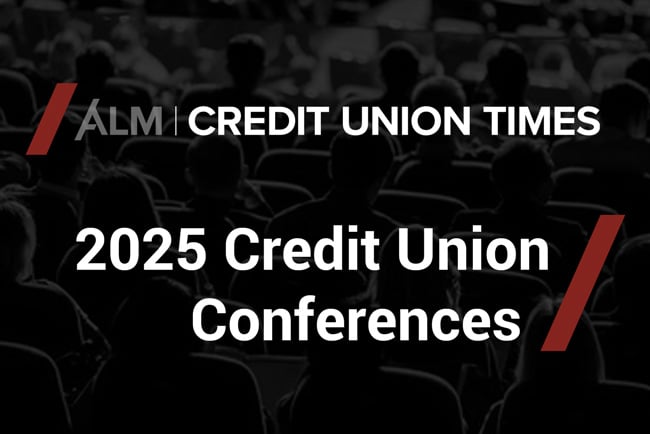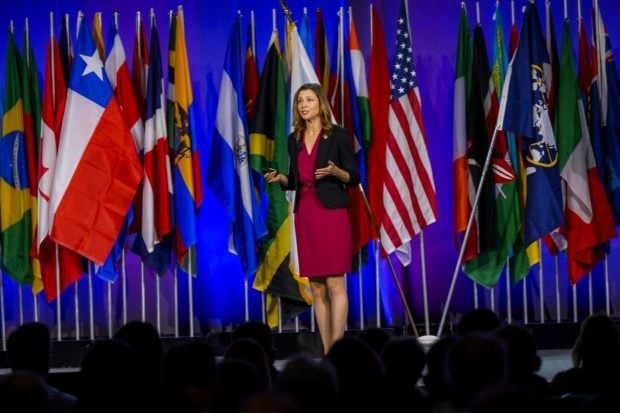
A sign (pictured left) welcomed volunteers from credit unions who came to help Tuscaloosa recover from the 2011 tornado.
The $61 million Tuscaloosa Credit Union serves one of the least banked metropolitan areas in the Southern region.
Recommended For You
More than 15% of the city's households do not have a deposit account at a bank or credit union, according to the FDIC's National Survey of 2009.
That figure was double the 7.7% national average for unbanked households. Additionally, the percentage of Tuscaloosa's underbanked households was 24.8%, much higher than the national average of 17.9%.
Working against those odds is a challenge for the Tuscaloosa, Ala., credit union.
The community was strained even further when a destructive tornado killed 50 people, destroying most of the city in April 2011.
Still, the credit union continued with its mission of helping the financially neglected.
Its efforts were recognized with the CU Times' 2015 Trailblazer Award for Outstanding Service to the Underserved.
"We had already been reaching out to underserved and lower income residents before the storm," Tommy Cobb, president/CEO at Tuscaloosa CU, said. "But the storm just made us work that much harder."
The National Weather Service rated the tornado's funnel cloud the second highest strength on the Fujita Scale, with winds that reached between 207 to 260 miles per hour. In Tuscaloosa, the storm destroyed or severely damaged more than 5,300 homes. Two-thirds of the houses were low-income rentals and more than half of the homeowners and renters of the obliterated homes had median incomes of $27,000 or less, according to the credit union.

Employees at Tuscaloosa Credit Union (pictured left) gathered to help prepare furniture for families made homeless by the storm.
Cobb spearheaded the recovery effort, helping to raise more than $90,000 to provide furniture and supplies to families left homeless.
The market for low- and moderate-income housing in Tuscaloosa County was already tight due to the wave of students arriving each fall to the University of Alabama, which has a campus in Tuscaloosa. In 2014, more than 36,000 students attended that campus, and 76% of the student body lived off campus, according to U.S. News and World Report's annual college rankings.
Tuscaloosa CU helped low-income members by providing financial education, partnering with local institutions.
The credit union also launched the Square One Loan for members who needed help to re-establish or build credit, or who were coming from an unbanked or underbanked situation.
Vikki Kizziah, chief lending officer at Tuscaloosa CU, first came up with the idea of the Square One Auto Loan, which has an interest rate of around 16%.
The rate is much higher than most auto rates, she acknowledged, but it is about half the rate members would face at "buy here, pay here" car lots.
The Square One auto loan also provides low income members with the cars they need to keep jobs in the mostly rural Tuscaloosa County. Members with cars can find better employment or take advantage of overtime opportunities in their current positions.
Kizziah said everyone, from tellers to loan officers and member service representatives, were trained to look for what the credit union called human touch points as chances to explain finance and possibly take an application.
"Sometimes, members walk in and they already know what they want, or think they do," Kizziah said. "But sometimes, they just know they have a problem and we have to probe a little bit, ask some questions and listen carefully to learn more."
Often, the uncertainty is about budgeting, Kizziah said. There are also questions about savings or how checking or debit cards work, how to remove a bad item on a credit report, or save more, such as using the "pay yourself first" approach, which takes an amount for savings off the top of paychecks and deposits the funds into savings accounts.
While this one-on-one interaction can take up a lot of staff time, it provides the best way to help members learn how to think differently about money, Cobb explained. Each year, 2,300 members learn better money management practices from the education at these touch points, he noted.

The Square One auto loan program's success led Tuscaloosa CU to launch a Square One Mortgage Loan. That led to the creation of a partnership with the Tuscaloosa Housing Authority, a semi-governmental organization founded in 1951 to administer housing assistance. In Tuscaloosa, the storm destroyed or severely damaged more than 5,300 homes. Two-thirds of the houses were low-income rentals.
The agency provided the financial education and preparation low-income and first-time homebuyers needed, according to Mike Ivey, chief mortgage officer at Tuscaloosa CU. Lessons included budgeting, financial planning, how to understand, evaluate and use credit, and how to take care of a home.
The borrowers prequalified by THA are more likely to be successful borrowers, he said.
Over a three-year period ending in mid-2014, 21 low-income, first-time homebuyers graduated from THA's training and qualified for a Tuscaloosa CU mortgage.
"I am very excited about my new home," said Laquisha Taylor, a credit union member and Tuscaloosa resident who obtained her family's first home through the Square One program. "It's a blessing to own your own home at the age of 30. My children are the most excited because now they have a large, safe backyard to play in."

PIctured to the left is Althelia Moton, a homeowner who used the credit union's Square One program to purchase her first home, with Tommy Cobb, president/CEO of Tuscaloosa CU, when she took possession of the home in June 2014.
Ivey said many of the THA program's graduates were the first people in their families to own homes.
"Members using the Square One approach have the chance to impact their family's lives for generations," Ivey said, adding the stability of home ownership will influence educational and professional achievement as well.
Further, Tuscaloosa CU has balanced serving the community while maintaining its own financial health.
The credit union had a net worth of 10.19% as of year-end 2014, according to NCUA financial performance reports.
At 0.28%, the cooperative's net charge-off rate was nearly half its peers' rate. Tuscaloosa CU's loan-to-share ratio of 77.3% was roughly 10 percentage points over its peer average.
At the end of 2014, Tuscaloosa CU was more than $426,000 in the black, with a record $42 million in loans on its books.
© 2025 ALM Global, LLC, All Rights Reserved. Request academic re-use from www.copyright.com. All other uses, submit a request to [email protected]. For more information visit Asset & Logo Licensing.







